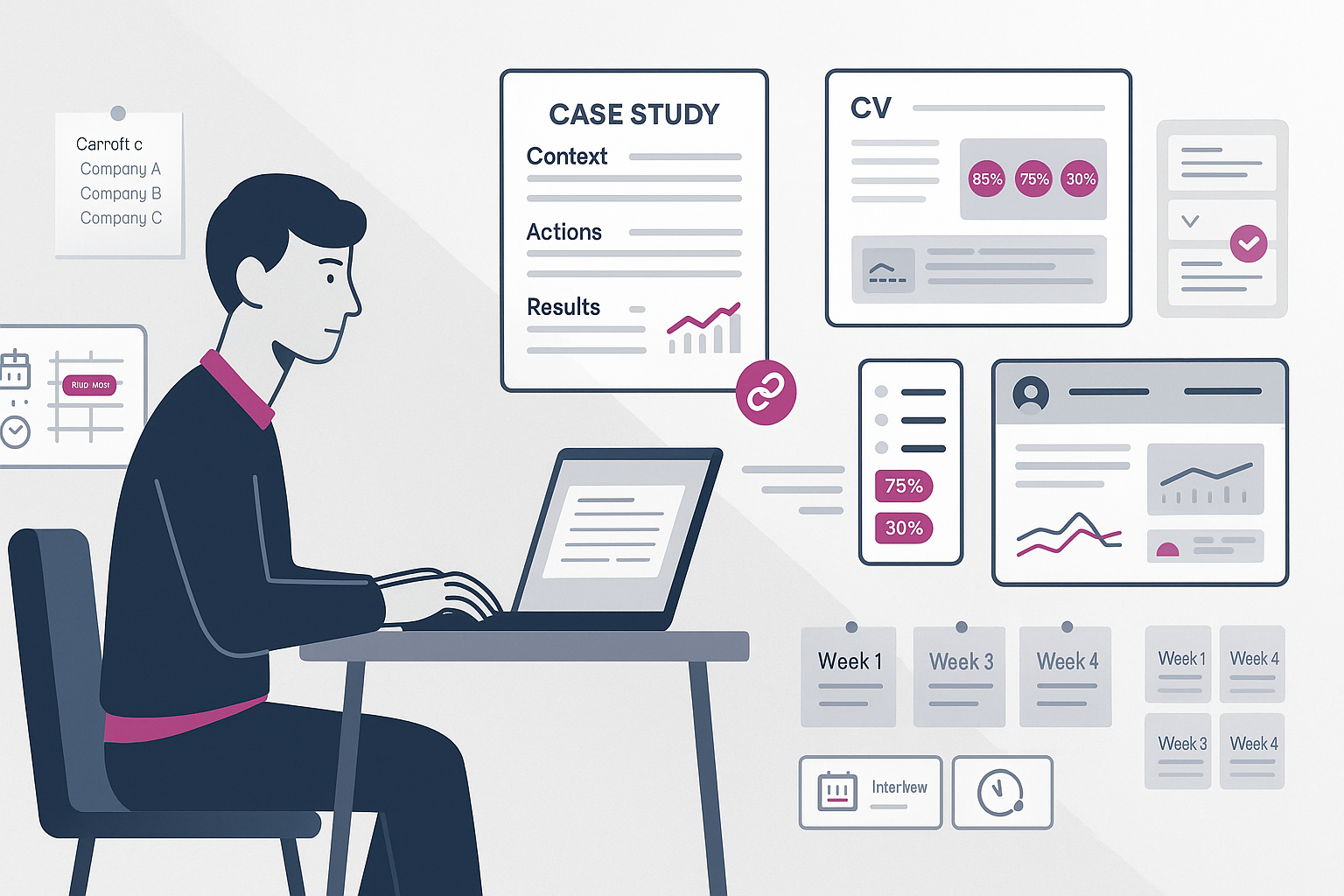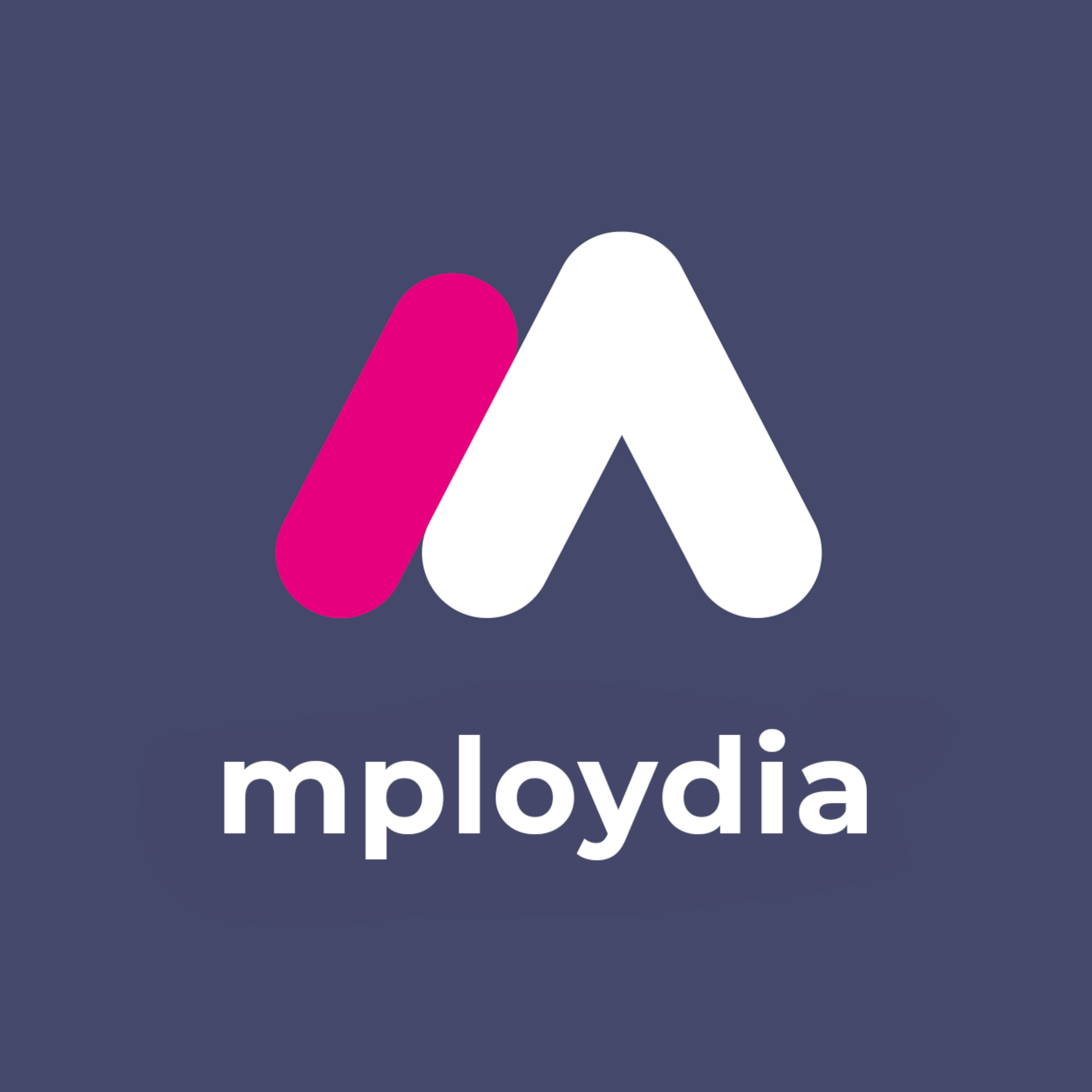
Win Interviews Without a Network: A Ruthless, Practical Playbook
No contacts. Proven interviews. Here is the plan
No contacts. No warm introductions. Still want interview invites? Good. You can win interviews without a network if you stop playing the popularity game and start de-risking yourself for employers. Most hiring managers are not looking for who you know. They are looking for clear proof that you can deliver value fast. This guide shows you exactly how to create that proof, surface it where employers search, and trigger interviews on merit.
Meaningful work matters. Access to decent work is a universal need, not a privilege. Talent is widely distributed. Opportunity often is not. Use the steps below to close that gap with assets and actions fully under your control. The result is simple. Interview invites that land because you earn them. Not because someone owes you a favour.
The no-network advantage: compete with proof, not people
Employers hire to reduce risk. Referrals reduce risk. If you do not have them, you must replace them with stronger public signals. The upside is that proof-of-work ages well, scales across applications, and compounds over time. Interviews come from:
- Relevance to the role
- Evidence of outcomes, not duties
- Signals of work-readiness and speed-to-impact
Your strategy is to manufacture those signals on purpose.
Build interview‑worthy proof in 14 days
Step 1. Pick a narrow, valuable problem
Identify a repeat pain employers pay for.
- Marketing: increase qualified leads with a low budget
- Sales: convert more inbound demos to closed deals
- Data: automate weekly reporting with a clean, accurate dashboard
- Customer support: reduce resolution time and complaint escalations
- Operations: fix a slow, error-prone process with a simple workflow tool
Write a one sentence problem statement. Example: Reduce average first response time in support from 12 hours to under 2 hours.
Step 2. Deliver a public proof-of-work asset
Build something concrete. Keep scope tight. Aim for a 10 to 15 hour build. Examples by function:
- Marketing: a 2 page teardown of a firm’s sign-up funnel with three high impact fixes and sample copy. Include before and after mock-ups.
- Sales: a concise battlecard for a target product against two competitors. Add a 90 second Loom explaining when to use it.
- Data: a dashboard that answers five key questions using open data. Include SQL snippets and data cleaning notes. Host a live link.
- Product: a clickable Figma prototype of an onboarding flow with a short usability test summary.
- Customer success: a proactive risk playbook with health score inputs and three email templates for renewals.
- Finance or ops: a simple Google Sheet model that automates invoice reconciliation. Include an audit checklist.
Step 3. Package it into a one page case study
Use a fixed template.
- Context: who the work is for and what problem it solves
- Actions: your specific steps and tools used
- Results: measurable impact, even if simulated or benchmarked
- Reuse: how this transfers to the employer’s environment
- Proof: link to assets, repo, live dashboard, or video
Keep it crisp. Use numbers. Avoid fluff.
Step 4. Publish where employers look
Put the case study on a simple site or hosted doc. Then surface it.
- LinkedIn: add to Featured, Experience, Projects, and Posts
- GitHub or GitLab: repo with a clear README and screenshots
- Behance or Dribbble for design work
- Kaggle for data notebooks
- Notion or Google Docs link with view access
- YouTube or Loom for short walkthroughs
Add keywords a recruiter would search. Use the job title, tool names, and problem. Example: Junior Data Analyst. SQL. Power BI. Operations dashboard.
Turn job ads into targeted value projects
Job adverts are signals of capabilities they will test. Convert the advert into a small deliverable that shows you can do the job now.
Decode the role in 20 minutes
- Paste the job ad into a doc. Highlight nouns and verbs tied to outcomes.
- Map tools and metrics mentioned.
- List three pains implied by the role.
Build a 1 to 2 deliverable proof
- Create a mini dashboard with the named tool.
- Write a short SOP that fixes one of the implied pains.
- Draft a two email sequence that hits the core metrics.
Important rule: never deliver proprietary work. Use public data or generic examples. Add a watermark that states sample for interview discussion.
Cold outreach that gets replies without existing contacts
Cold messages work if they are relevant, respectful, and useful. Design a micro campaign. Target three roles per company.
- Hiring manager
- A peer on the team
- The internal recruiter
Use the 100–20–10 approach:
- 100 highly targeted companies
- 20 tailored outreaches per week
- 10 follow-ups across two weeks
Message structure that works
Subject: Your Support SLAs are slow to confirm
Body: Hi Priya, I reviewed your support help centre and response updates. I built a 1 page plan to bring first response time below 2 hours in 14 days using your current tools. Short Loom here [link]. If useful, happy to walk you through it in 10 minutes. If not relevant, no problem.
Repeat for a peer and the recruiter with adjusted framing. For peers, talk about workflow pain. For recruiters, talk about candidate proof and readiness.
Follow-up rhythm
- Day 0: initial message with the short value asset
- Day 2: a quick nudge and a second micro insight
- Day 5: ask a question tied to their tech stack or KPI
- Day 9: close the loop politely with one new datapoint
Avoid generic requests like pick your brain or do you have any openings. Ask for a 10 minute review of the attached proof and whether it maps to their current priorities.
Optimise CV and profiles to rank without referrals
Your CV and LinkedIn must act as a search engine entry. You want to appear in recruiter searches and survive ATS filters.
ATS basics that prevent instant rejection
- Use a clean single column layout
- Job title on your CV must mirror the target role
- Include exact keywords from the job ad in context
- Replace duties with impact statements using numbers
- Add tools and certifications by name where relevant
Impact formula
Use verb, object, metric, timeframe. Example: Reduced ticket backlog 38 percent in 6 weeks by designing a triage SOP in Zendesk.
LinkedIn for discoverability
- Headline formula: Target Role | Core Tools | Outcome You Deliver
- About: 3 to 4 proof points with numbers and links to work
- Featured: link to your best case studies and videos
- Experience: measurable outcomes, not task lists
- Skills: 25 to 35 relevant skills mapped to target jobs
- Custom URL and location set to the target hiring market
Maintain consistency between CV and LinkedIn. Recruiters cross-check.
Use public signals to replace private references
You can create third party validation without a traditional network.
- LinkedIn recommendations from tutors, clients, volunteers, hackathon organisers
- Ratings and comments on public repos, Figma files, Kaggle notebooks
- Micro-credentials with verifiable badges from credible platforms
- Challenge results and leaderboards with rank and score
- Testimonials captured via email and added as screenshots
Target three signals per application. Make them visible in your Featured section and CV.
Win interviews via challenge platforms and open hiring
Engineered visibility beats luck. Join places where work is screened by outcomes.
- Kaggle or DrivenData for analytics challenges
- Open source issues on GitHub for software and documentation
- Figma Community for UI kits and component libraries
- Product teardown threads with specific, quantified suggestions
- No code challenges on platforms like Airtable and Glide
- CTF or wargame platforms for cyber security basics
- Local and online hackathons with live judging
Avoid unpaid spec work for a single company unless you scope it tightly, watermark it, and reuse it publicly.
Master the application funnel without a network
Stop guessing. Run your search like a pipeline. Define your numbers.
Example weekly operating plan
- Inputs: 5 targeted applications per day, 10 outreaches, 3 follow-ups
- Outputs: 3 recruiter screens, 1 hiring manager conversation, 1 take-home or portfolio review
Track in a simple sheet
- Company, role, date applied, contact names, assets sent, status, next action, date to follow up
Use two hour daily focus blocks
- 45 minutes asset building
- 45 minutes targeted applications
- 30 minutes outreach and follow-up
Treat your job search as a product. Ship features every day.
Interview invite triggers you can control
Recruiters invite when they see reduced risk and fast impact. You can trigger that.
- Mirrored language from their job ad in your CV and LinkedIn headline
- Relevant public proof attached to the application form
- A short Loom critique of their product or process
- A micro fix to an obvious issue in their funnel or docs
- Evidence of tool fluency with their stack
- Local availability and start date clarity
Add a one line P.S. in your application note. Example: P.S. Found a 404 link in your pricing FAQ. Sent a fix and proposed copy here [link].
Examples: zero‑network to interview in three profiles
Example 1. Entry level marketing
- Build: 2 page teardown of a target firm’s sign-up and first email. Add two new subject lines and a one week nurture plan.
- Publish: LinkedIn post with before and after images.
- Apply: Tailored CV. Headline: Junior Marketer | Email + Paid Social | Lead Gen.
- Outreach: To the hiring manager. Subject: 7 percent lift in activation in 14 days. Link to your teardown. Ask for 10 minutes to review.
- Result: Interview triggered by relevance and usable assets.
Example 2. Data analyst
- Build: Power BI dashboard using open data that mirrors the company’s core KPI. Include SQL.
- Publish: Live link and a Loom walkthrough.
- Apply: CV with impact bullets referencing data cleaning, joins, DAX, and stakeholder questions the dashboard answers.
- Outreach: To a peer analyst. Ask if your dashboard covers the questions they get every Monday. Include the link.
- Result: Interview triggered by tool fluency and stakeholder empathy.
Example 3. Customer service
- Build: SOP that cuts first response time with templates and triage logic. Include a before and after metric.
- Publish: Google Doc with view access and a short video.
- Apply: CV bullets that show reduced AHT and CSAT improvements from role plays or volunteer work.
- Outreach: To the support lead. Offer to walk through your SOP.
- Result: Interview triggered by operational clarity and speed to value.
Common mistakes that kill interviews when you lack a network
- Generic CV that does not mirror the job title
- No numbers in your experience bullets
- Overly broad applications to 50 unrelated roles
- Passive LinkedIn with no work samples
- Long, vague cover letters with clichés
- Ignoring the application’s additional questions box
- Not following up within 3 to 5 days
- Unprofessional email address and voicemail greeting
- ATS-unfriendly CV with graphics and columns
- Portfolio links that require login or break on mobile
- Talking about duties rather than employer outcomes
- Using academic projects without reframing for business value
- Failing to show clear availability and right to work status
A 30‑day execution plan
Week 1: Build foundation
- Pick your target role and three core tools
- Draft a one page CV tailored to that role
- Build your first 10 hour proof-of-work asset
- Update LinkedIn headline, About, Featured, and Skills
- Create a simple portfolio page with links
Week 2: Ship and outreach
- Publish the asset and a 90 second Loom
- Apply to 25 targeted roles with tailored keywords
- Start 20 personalised outreaches with value snippets
- Collect two recommendations on LinkedIn
- Join one challenge platform relevant to your field
Week 3: Scale and refine
- Build a second asset based on a live job ad
- Replace weak bullets on your CV with measurable outcomes
- Post two short insights on LinkedIn tied to your projects
- Run follow-ups to all Week 2 outreaches
- Submit to one community challenge or open source issue
Week 4: Convert and iterate
- Build a third micro asset or extend the best performing one
- Tighten your outreach scripts based on response data
- Increase application quality by rejecting poor fit roles
- Prepare for screens with a 5 question story bank
- Ask for feedback after every rejection and apply the learning
Rapid scripts you can adapt
Connection request on LinkedIn
Hi Sam, I built a short dashboard that answers the weekly questions your team likely handles. Would you be open to a 10 minute review to see if it maps to your current priorities?
Email to recruiter
Subject: Candidate with live proof for your Data Analyst role
Body: Hi Alex, I have a live Power BI dashboard and 90 second walkthrough aligned to the role. CV attached. Links below. Can we schedule a screen this week?
Email to hiring manager
Subject: Found three quick wins in your onboarding flow
Body: Hi Lee, I mapped your sign-up to three known drop-off points and drafted fixes. Short video here. If useful, happy to discuss. If not, thanks for your time.
Cover letter structure that actually helps
Use three short sections.
- Why this role: one sentence linking your proof to their need
- Why me: two bullets with metrics and tools
- What you get next week: one bullet with a deliverable you can produce
Be direct. Be concrete.
Frequently asked questions
Do cover letters still matter?
Yes if they are specific and short. They act as your argument for relevance.
Should I apply through the company site or the job board?
Apply on the company site for tracking and then email the recruiter or hiring manager with your proof-of-work link.
How many applications per week?
Prioritise quality. Aim for 25 to 40 targeted applications with proof attached, not 200 generic clicks.
What if I have no experience at all?
Create it. Volunteer, do a project for a local charity, or use public data. Package the outcome. Employers care about outcomes, not where you earned them.
How long should my CV be?
One page for early careers. Two pages only if you have direct, relevant experience and measurable wins.
Final word
You do not need a network to win interviews. You need relevance, proof, and visibility. Build assets that de-risk you. Put them where employers look. Ask for short, specific conversations. Operate a consistent pipeline. You will get interviews because you earned them on the strength of your work.
Start today. In 14 days you can hold two tangible proofs, a tuned CV, and a LinkedIn profile that surfaces in searches. That beats waiting for a favour every time.
Next Steps
Want to learn more? Check out these articles:
Graduate wins without internships: tactics to get hired
Post-Application Silence Plan What To Do If You Hear Nothing
Translate Tasks Into Employer Value [The Practical Playbook]
Check out our Advanced Employability Course for all the help you need to get your dream job, fast.


